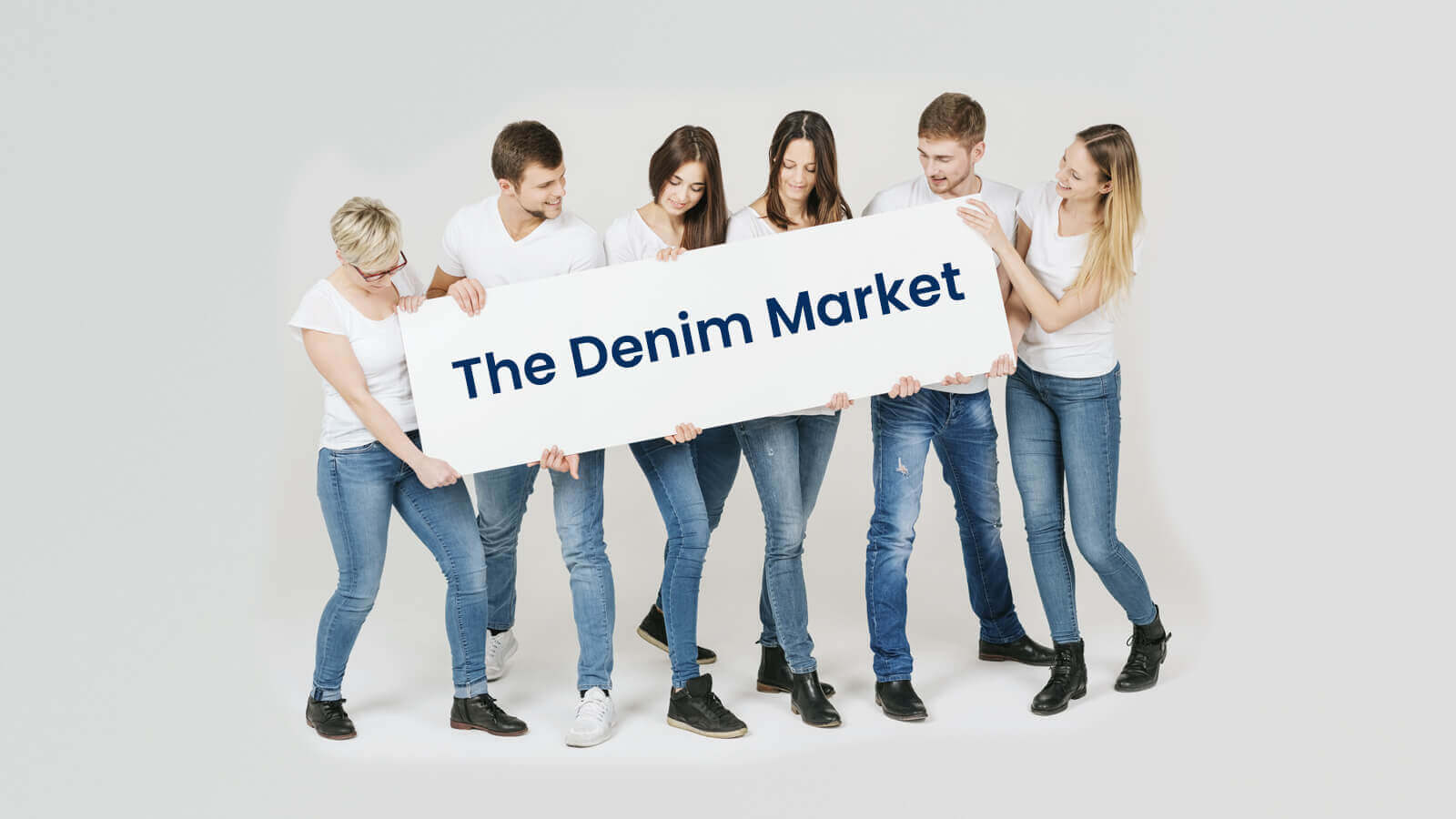Up close and personal: Getting to know the denim market in India

Up close and personal: Getting to know the denim market in India
In the post-pandemic world, the denim industry appears to be one of the fastest-recovering segments. The trusted market research agency Research and Markets projections suggest that the global denim market may be valued at $87.4 billion by 2027.
Against such lofty possibilities, the Indian denim market holds great promise and potential. Today, with an annual installed capacity of nearly 1,600 million meters of denim fabric, India’s market is second only to China’s in terms of sheer size.
Top trends in the denim market
Colored denim
Blue denim may be classic, but colored denim is ever-increasing in popularity. For instance, white and black denim are crowd favorites when it comes to jeans. In addition, non-standard colors like brown, mustard, military green, and even red are finding their place in the spotlight. Unique fabric shades are also preferred for other kinds of apparel, like denim skirts, jackets, and jumpsuits.
Washed denim
Transparency is crucial in the supply chain, and sustainability is fast becoming a necessary box to tick. Unfortunately, many suppliers in the apparel supply chain fail to communicate vital information about logistical delays on time. They may also use unsustainable supply chain practices without disclosing them. Washed denim is softer, more stable, and easier to handle. The fabric may be put through different kinds of wash before it’s sold. The most common type is stone wash, which uses pumice stones. Then, there’s an acid wash for the denim fabric, which uses pumice stones soaked in an acid solution. You also have rinse and enzyme wash, each of which is effective.
Quilted denim
Lead times have increasingly become shorter because of reducing product cycles and the rising preference for fast fashion. This makes it tough for apparel companies to obtain delivery of their supplies in a timely manner. Quilted denim products blend style and functionality for customers looking for warm clothing that doesn’t compromise on aesthetics. This denim category achieves the desired results by using crosshatch stitches on cotton-based denim and adding a light layer of thermal poly. Popular products in this segment include quilted denim jackets, coats, coveralls, and even bags.
Stretch denim products
While perishability may not be a big issue for the apparel industry, transportation issues can often plague its supply chain. As a result, shipments may go missing or products could reach the end user in a damaged condition, leading to a loss of credibility for the apparel company. Stretch denim typically uses other synthetic fabrics like lycra or elastane to make garments more flexible. This makes the fit better too, which is why an increasing segment of customers prefers flexible denim to the traditional fabric version. In addition, stretchy denim is primarily lightweight. Bull denim fabric may be the exception since it is a heavier variant that is 100% cotton.
Give your denim business an upgrade with the best-in-class fashion solutions.
The denim market can be dynamic and challenging. You need peerless solutions from sourcing to delivery to stay ahead of the competition. Zoglix can help you here. We offer a one-stop solution for all your denim design and sourcing needs with end-to-end custom manufacturing services, hassle-free order tracking, brand collaborations, logistics, inventory management, and more.
Visit our website to know more.
The Future Is Bright for The Athleisure Industry

The Future Is Bright for The Athleisure Industry
Every few years, a new trend pops up and takes the world by storm before promptly giving way to another. While many fashion trends are short-lived, a few completely revolutionize the industry and grow year after year. Athleisure, the confluence of athletic clothing and leisure wear, is one such anomaly. What began as a niche fashion choice touted by celebrities and large fashion brands has seeped its way into the mainstream across national borders. In addition, the static period of the covid-19 pandemic made athleisure an even more relevant choice. Studies showed that orders of athleisure clothing have grown by 84% since the pandemic’s beginning. Valued at $306 billion in 2021, the athleisure industry is expected to grow by 8.9% by 2030. When trying to understand the rise of athleisure and its surprising resilience as a fashion trend, it is important to explore why people are so attracted to this type of clothing.
The Intersection of Style and Comfort
Blue denim may be classic, but colored denim is ever-increasing in popularity. For instance, white and black denim are crowd favorites when it comes to jeans. In addition, non-standard colors like brown, mustard, military green, and even red are finding their place in the spotlight. Unique fabric shades are also preferred for other kinds of apparel, like denim skirts, jackets, and jumpsuits.While our world pre-pandemic could be neatly segregated into professional or casual clothing, the lines have been increasingly blurred since. With work meetings being taken in yesterday’s track pants and office wear becoming obsolete, people were looking for clothing that gave the appearance of style with the comfort of loungewear. Athleisure fits neatly into the niche, with easy-to-wear options that still show a sense of personal identity. Blue denim may be classic, but colored denim is ever-increasing in popularity. For instance, white and black denim are crowd favorites when it comes to jeans. In addition, non-standard colors like brown, mustard, military green, and even red are finding their place in the spotlight. Unique fabric shades are also preferred for other kinds of apparel, like denim skirts, jackets, and jumpsuits.
Size-Inclusive
For years, major fashion brands have come under fire for creating clothing lines that cater to a specific body type, as represented in beauty norms. While the tides have begun to turn, there is still a long way to go to break barriers for size inclusivity. Athleisure, by nature, provides various options and stretchable sizes that can do more than the conventional sizing chart. While brands must still make a conscious effort to manufacture for all sizes, it is undoubtedly easier to begin this in the athleisure industry.
The Growth of Streetwear
Streetwear, a vast term whose meaning is precisely what it sounds like, is a growing industry in mainstream and niche markets. Streetwear clothing tends to be experimental, unique, and more expensive than fast fashion choices. The rise of athleisure has complemented the growth of streetwear, as the two often overlap. Streetwear is touted as a powerful way to show personal expression in one’s day-to-day clothing choices.
The Importance of Sourcing and Manufacturing Right
Given the highly competitive nature of the athleisure industry, it is crucial to source and manufacture your products without ratcheting up costs or delays. New brands can begin with sourcing or producing small batches of activewear. If yours is a young company in this market segment, you may want to start by sourcing or manufacturing a few athleisure products in some basic colors. Once you gather clarity on how your target audience reacts to your products and what else they are looking for, you can fill the gaps, scale up and expand into larger batches.
To get sourcing and manufacturing right in an industry as ambitious as the activewear segment, you need to identify the right sourcing and manufacturing partners. Zoglix helps you manage the sourcing and manufacturing process for your business comprehensively, from end to end. So, get in touch with us to experience the advantage of holistic supply chain transformation today.